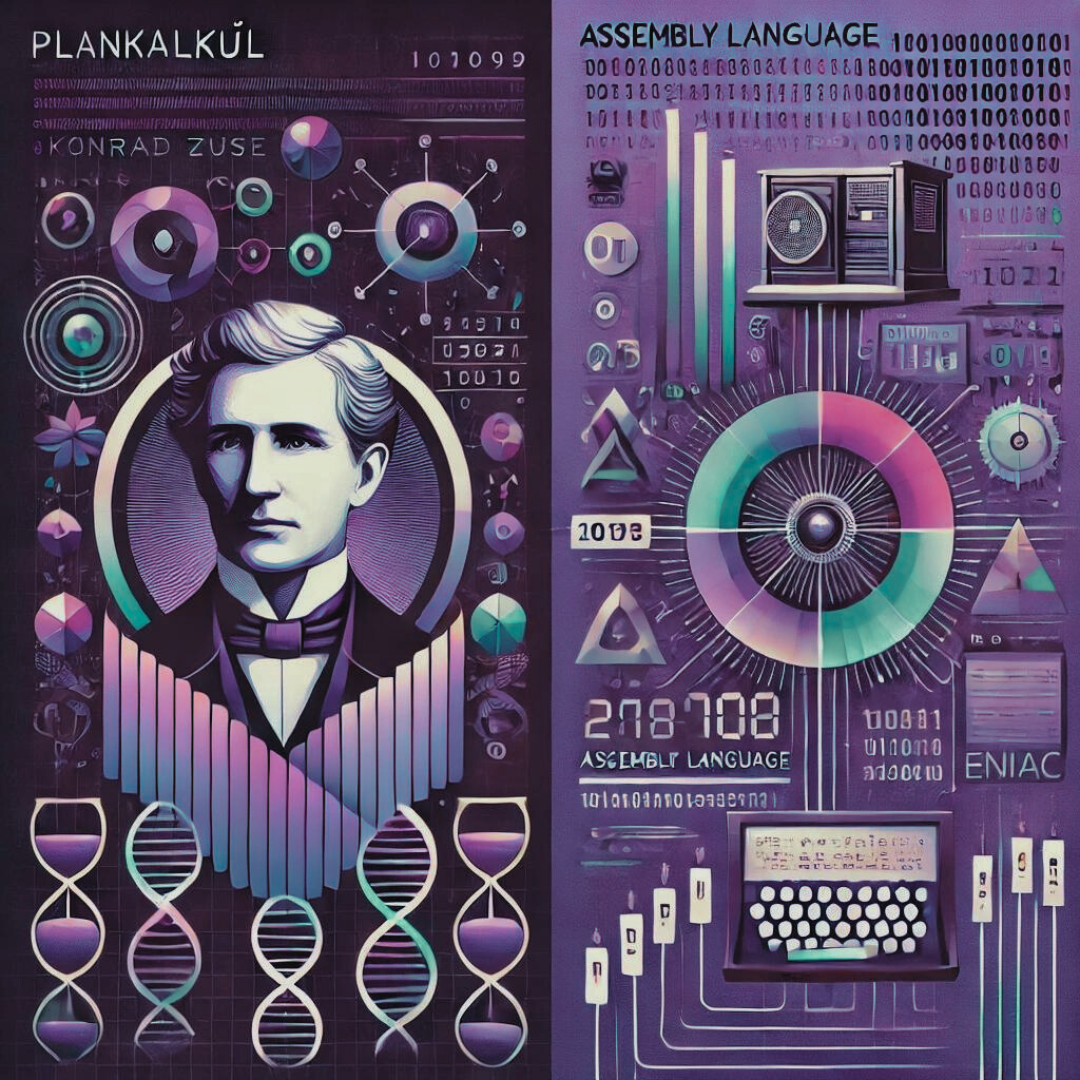When we think about the foundations of modern programming, three pioneering languages stand out: Plankalkül, Assembly, and Fortran. Each played a crucial role in shaping the way we write code today, and understanding their origins offers a fascinating glimpse into the history of computing.
Plankalkül: The Visionary Language That Was Ahead of Its Time
In the early 1940s, Konrad Zuse, a German engineer, developed Plankalkül, which is considered the first high-level programming language. Zuse’s vision was revolutionary—he designed Plankalkül to express complex algorithms, introducing concepts like loops and conditional logic that are still fundamental in programming today. However, Plankalkül remained largely unknown for decades due to the political and technological barriers of the time. It was a hidden treasure in the world of computing, only gaining recognition much later.
Assembly Language: The Practical Powerhouse
Around the same time, Assembly language emerged as the first practical programming language. Unlike Plankalkül, Assembly was designed for direct interaction with the hardware of early computers like the ENIAC. It was a low-level language, meaning it was closely tied to the machine’s architecture, allowing programmers to write code that directly manipulated the hardware. Assembly was all about raw power and efficiency, making it indispensable for the early days of computing.
Fortran: The First Widely Used High-Level Language
Fast forward to the 1950s, and we see the introduction of Fortran (short for “Formula Translation”). Developed by IBM, Fortran was the first high-level programming language to achieve widespread adoption. It was designed specifically for scientific and engineering applications, making complex mathematical calculations more manageable. Fortran introduced the concept of readable code that could be easily understood and maintained, which was a significant step forward in programming. Its influence is still seen today, especially in fields like scientific computing.
The Legacy of Three Pioneers
Each of these languages laid crucial groundwork for the evolution of programming:
- Plankalkül was the visionary language that introduced high-level programming concepts.
- Assembly provided the practical means to harness the power of early computers.
- Fortran brought programming into the mainstream, making it accessible and usable for a broader range of applications.
Together, they represent the diverse paths that led to the powerful and versatile programming languages we use today. Understanding their origins helps us appreciate the complexity and creativity that underpins modern computing. Whether you’re a developer, a tech enthusiast, or simply curious about the history of technology, the stories of Plankalkül, Assembly, and Fortran are a testament to the ingenuity that drives innovation.
